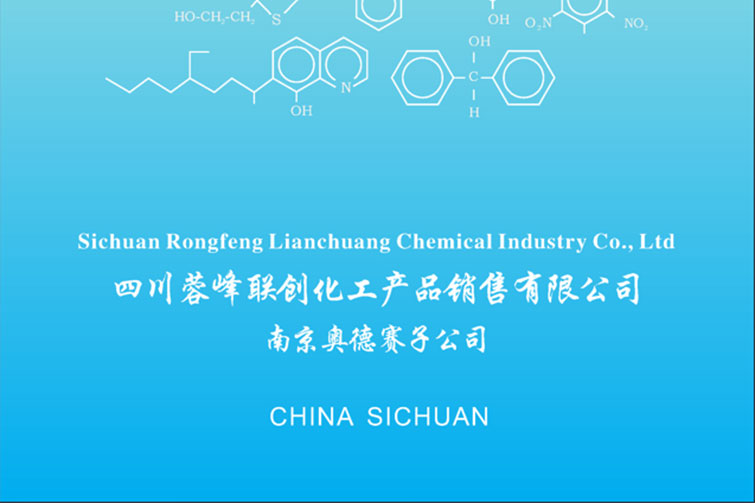

Antibacterial activity of nitroquinoline
Introduction
Nitroxoline is a quinoline-derivative antimicrobial agent that has been used for decades—primarily in Europe and some Asian countries—for the treatment of uncomplicated urinary tract infections (UTIs). PMC+2PMC+2 In recent years, interest has grown in repurposing nitroxoline for broader antimicrobial indications, including against multidrug-resistant pathogens and biofilm-associated infections. ijnrd.org+2PMC+2
Spectrum of Antimicrobial Activity
Historically nitroxoline’s use was largely limited to uropathogens; however, newer data indicate a much broader spectrum of activity. One recent large study tested over 1,000 clinical isolates from more than 30 Gram-negative species and found median minimum inhibitory concentrations (MICs) in the low microgram-per-mL range (e.g., ~2–4 µg/mL) against many Enterobacterales and Acinetobacter spp. PMC It also showed bactericidal killing of certain pathogens such as Acinetobacter baumannii. PMC+1 Moreover, nitroxoline has shown in vitro activity against Gram-positive bacteria, fungi, and even some mycobacteria (though with less consistent potency) in review articles. ijnrd.org+1 Notably, nitroxoline also demonstrates anti-biofilm activity (important in chronic infections). 科学直通车+1
Mechanism of Action
Nitroxoline’s mechanism of antimicrobial action is multifaceted and distinct from many classic antibiotics, which gives it potential utility in antimicrobial resistance settings. Some key features of its mechanism include:
- Metal ion chelation / metallophore-like activity Nitroxoline binds divalent metal ions (such as copper, zinc, iron) and thereby interferes with essential metal-dependent processes in bacteria. In the recent study by Cacace et al., nitroxoline was shown to induce intracellular copper and zinc overload (i.e., acting as a metallophore rather than merely a chelator) and to disturb bacterial metal homoeostasis. PMC Specifically, exposure to nitroxoline increased intracellular zinc and copper levels, stabilised metal-responsive regulatory proteins, and triggered changes consistent with metal stress. PMC
- Outer membrane / envelope disruption The same work found that nitroxoline disrupts the integrity of the bacterial outer membrane in Gram-negative bacteria, which may contribute to membrane permeabilisation, cytoplasmic content release, and bactericidal activity in species previously considered only bacteriostatically inhibited. PMC
- Biofilm inhibition / dispersal Nitroxoline has been demonstrated to inhibit biofilm formation and to reduce pre-formed biofilms (e.g., of Pseudomonas aeruginosa) by virtue of its metal chelation and by disturbing extracellular matrix stability (which often depends on metal cross-linking). 维基百科+1
- No single high-affinity protein target (pleiotropic effects) Unlike many antibiotics targeting a single enzyme (e.g., DNA gyrase, ribosome), nitroxoline appears to exert broad stress on bacterial physiology (metal stress, membrane damage, maybe enzyme inhibition) rather than binding one narrow target. This pleiotropy is thought to contribute to the relatively low frequency of resistance observed in older use. PMC+1
Clinical & Preclinical Implications
Because of its different mechanism and broader spectrum, nitroxoline offers several potential clinical advantages in the era of antimicrobial resistance:
- Potential for repurposing: Nitroxoline is an older drug with known safety profile (in its UTI indication), which makes it an appealing candidate for repurposing against harder infections (e.g., resistant Gram-negatives). PMC
- Synergy with other antibiotics: In vitro studies show that nitroxoline can synergise with other antibiotics—particularly in Gram-negative pathogens—by disrupting outer membrane integrity and thereby enhancing the efficacy of other agents. For example, synergy with colistin in colistin-resistant Enterobacteriaceae was documented. PMC
- Biofilm-associated infections: Because nitroxoline impacts biofilm formation and integrity, it may be particularly useful in chronic or device-associated infections where biofilms pose a therapeutic challenge.
- Activity against difficult pathogens: The fact that killing (not just growth inhibition) has been observed in A. baumannii and other difficult Gram-negatives is promising. PMC+1
However, it is important to emphasise that while the preclinical data are encouraging, clinical data beyond its UTI indication remain limited.
Resistance and Limitations
Like all antimicrobials, nitroxoline is not immune to the development of resistance, and several limitations must be considered:
- Resistance mechanisms: The major resistance mechanism identified in multiple species is the upregulation of efflux pumps (especially RND family pumps) which reduce intracellular accumulation of nitroxoline. PMC+1 In some studies, bacteria with acquired nitroxoline resistance demonstrated reduced fitness (e.g., less virulent in vivo). ASM Journals
- Pharmacokinetic / tissue distribution issues: Traditional use of nitroxoline has been for urinary tract infections, where high urinary concentrations favour efficacy. Data on tissue penetration, systemic use, dosing in non-urinary settings are less abundant. Some derivative work indicates issues with short plasma half-life and rapid urinary excretion. Taylor & Francis Online
- Specimen variation: Although nitroxoline shows activity against many pathogens, some species (e.g., Pseudomonas aeruginosa) may exhibit higher MICs and reduced susceptibility compared to more susceptible groups. PMC
- Lack of large clinical trials: There is a relative dearth of well-controlled human trials using nitroxoline for systemic, resistant, or biofilm-associated infections; most evidence remains in vitro or in early/retrospective settings. This limits the strength of current treatment recommendations.
- Safety / side-effect profile in new settings: While safety is established for UTI indication, using it for broader infections or higher doses may require further safety evaluation.
Future Directions
Given the above, the future of nitroxoline in antimicrobial therapy may involve:
- Conducting clinical trials for non-urinary indications, especially for infections caused by multidrug-resistant Gram-negatives and biofilm-related infections.
- Developing combination therapy protocols, pairing nitroxoline with other antibiotics (especially for synergy and resistance avoidance).
- Exploring formulation improvements (e.g., modified release, pro-drugs, improved tissue penetration) to overcome pharmacokinetic limitations.
- Monitoring resistance development and fitness cost, assessing whether nitroxoline can remain effective in the long term.
- Investigating its role in device-associated infections, urinary-tract biofilms, and implant-related chronic infections given its anti-biofilm properties.
Conclusion
In summary, nitroxoline is an “old” antibiotic that is finding new relevance in the contemporary era of antimicrobial resistance. Its distinctive mechanism—metal-ion perturbation, membrane disruption and anti-biofilm activity—sets it apart from many conventional agents. It has shown promising in vitro and early preclinical efficacy against a wide spectrum of pathogens, including problematic Gram-negatives and biofilm-forming species. Though several challenges remain (notably in pharmacokinetics, systemic clinical data, and resistance surveillance), nitroxoline represents a valuable candidate for repurposing as part of the armamentarium against resistant and complex infections. With further study and development, it may play a meaningful role in modern antimicrobial therapy.





